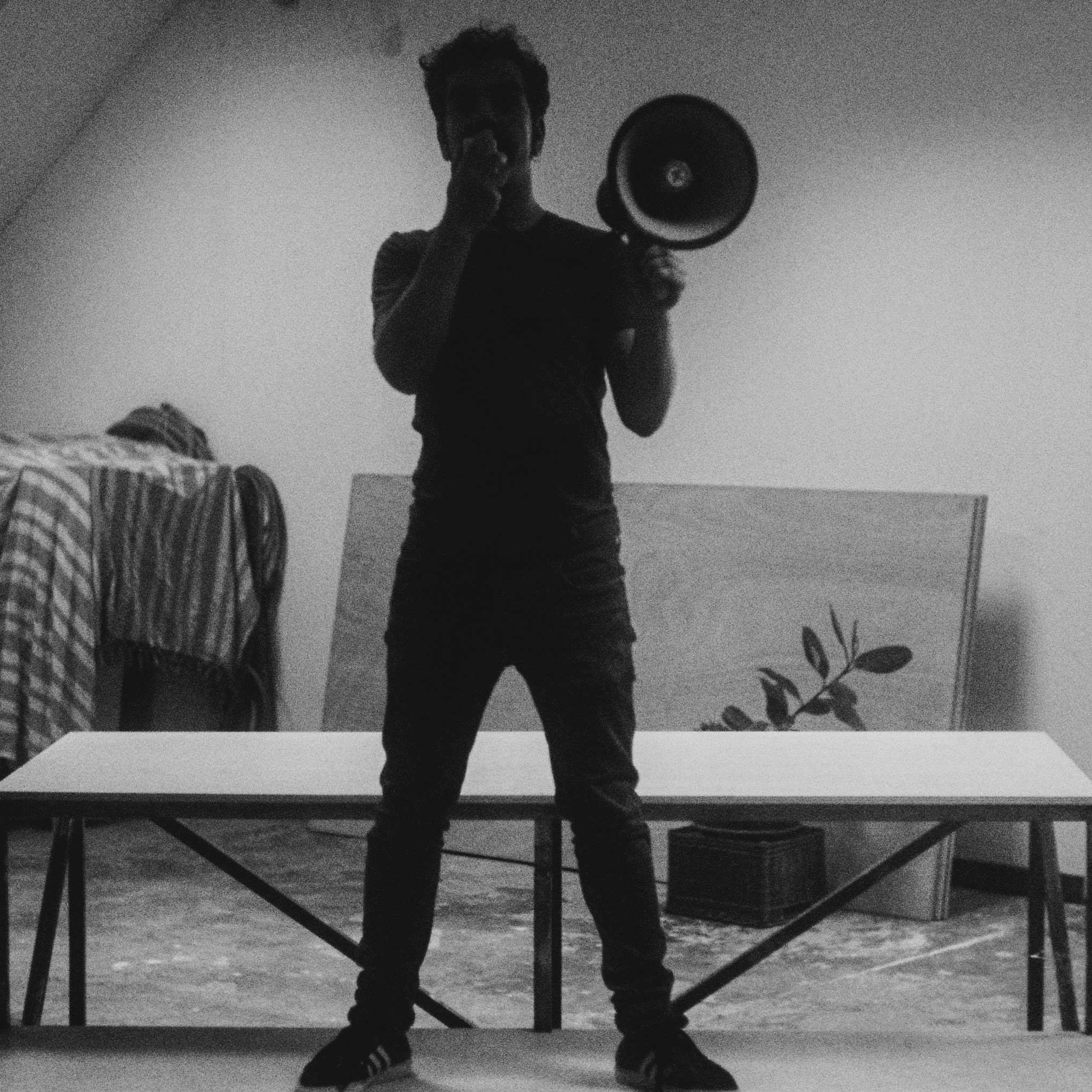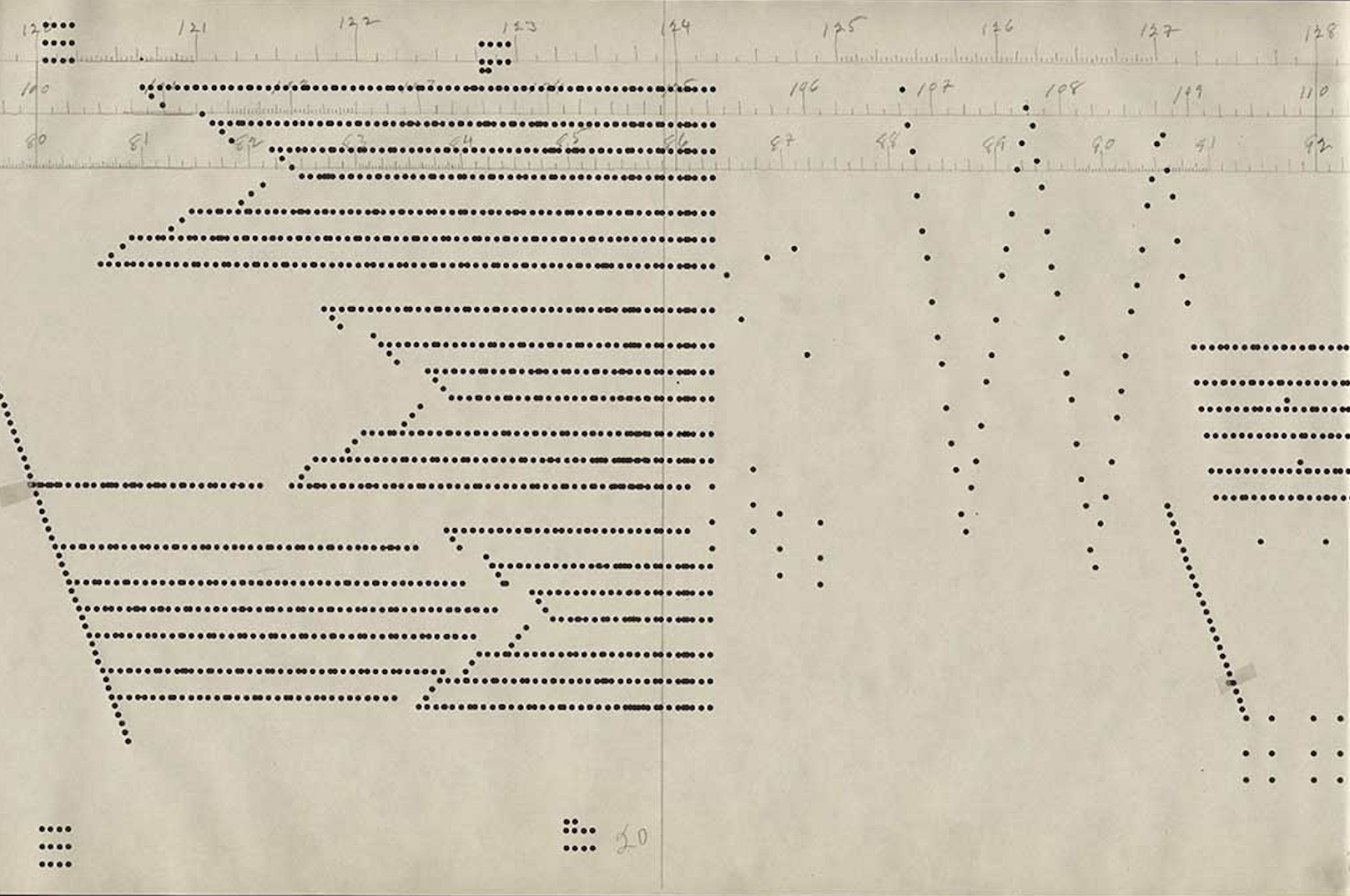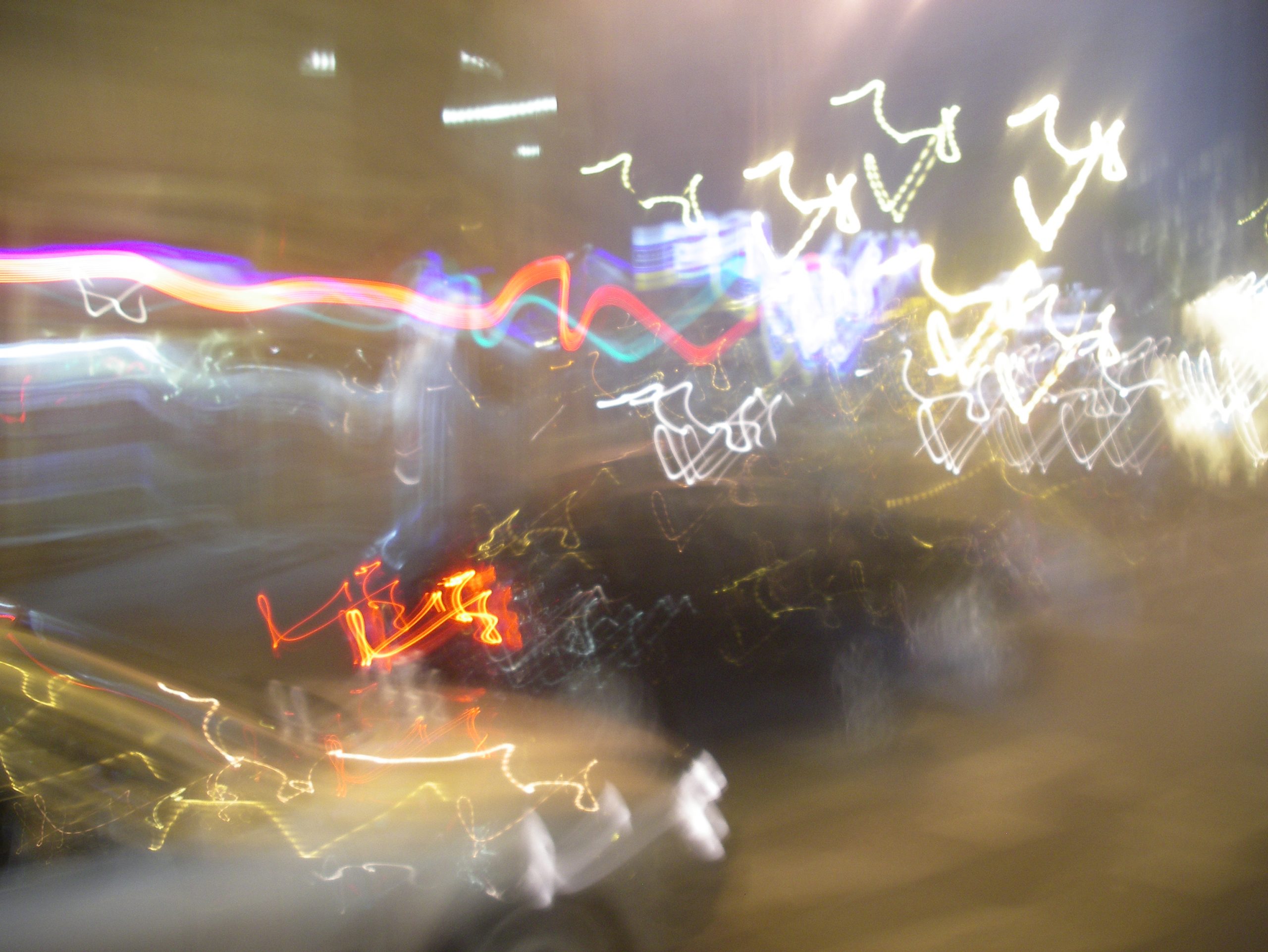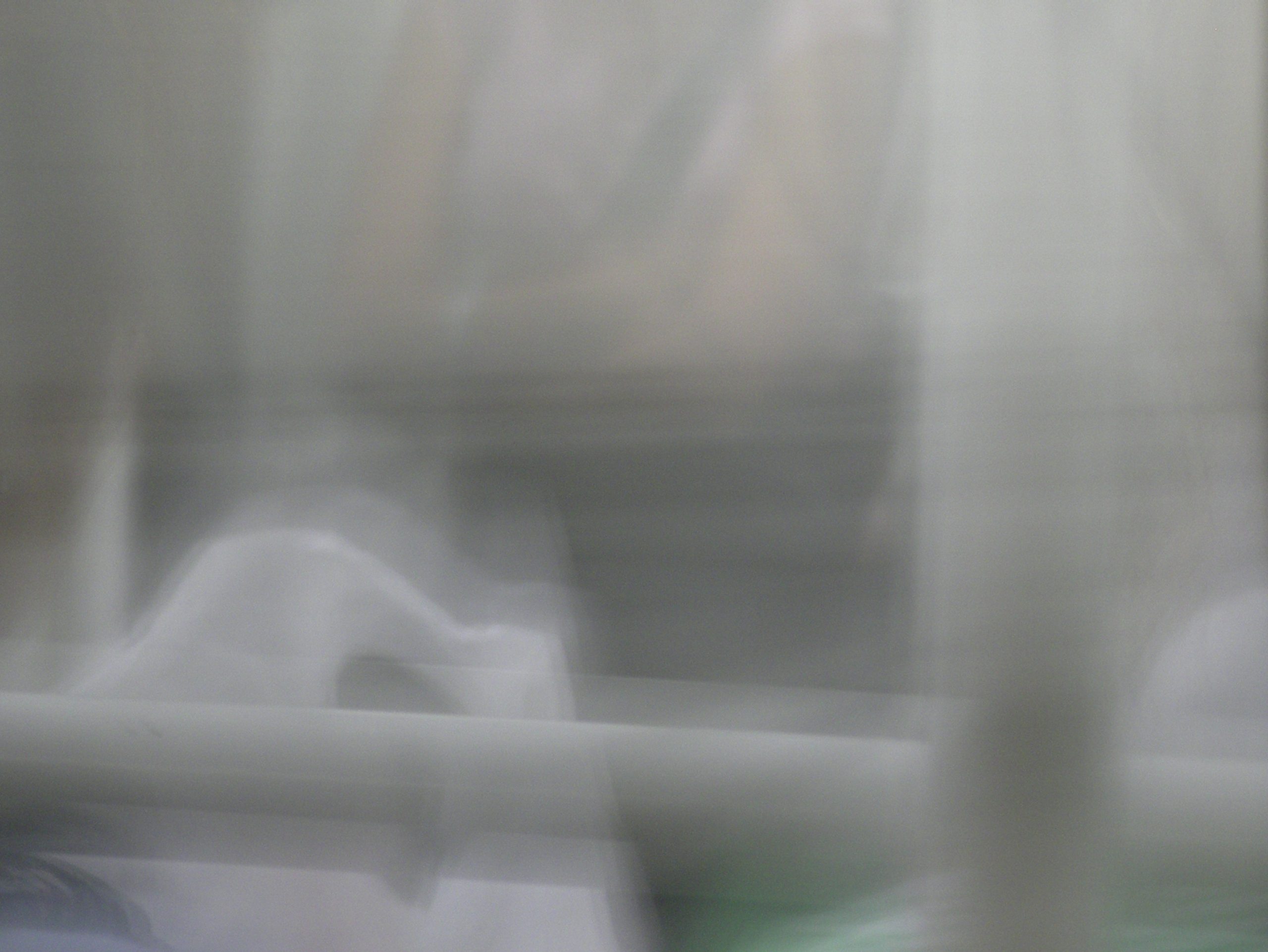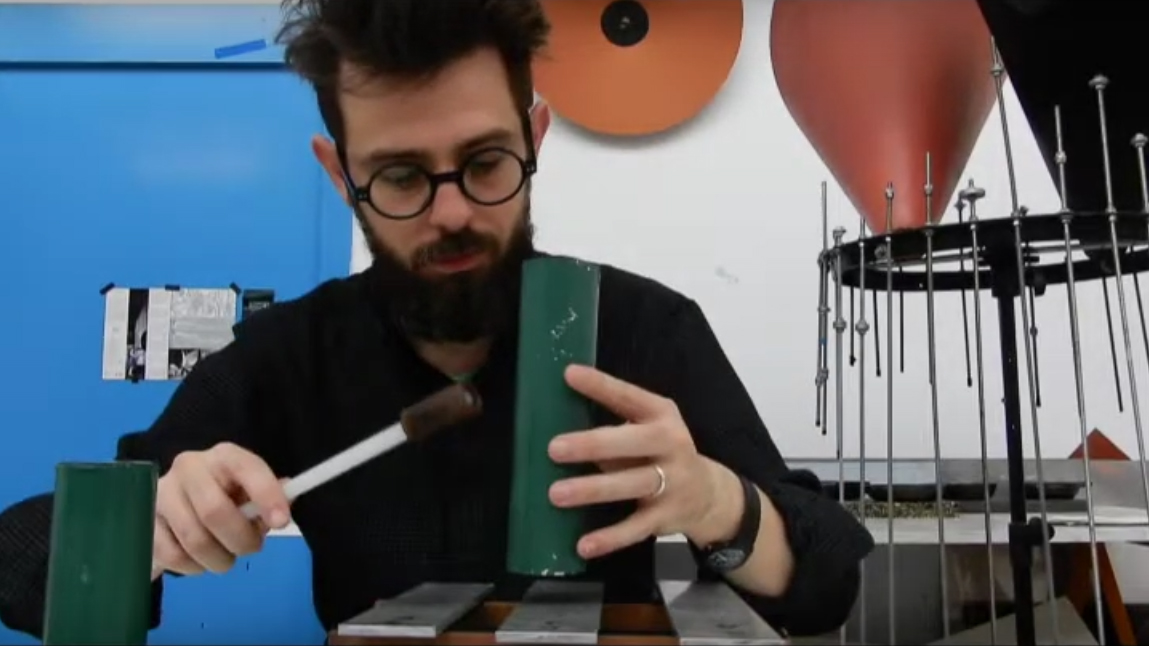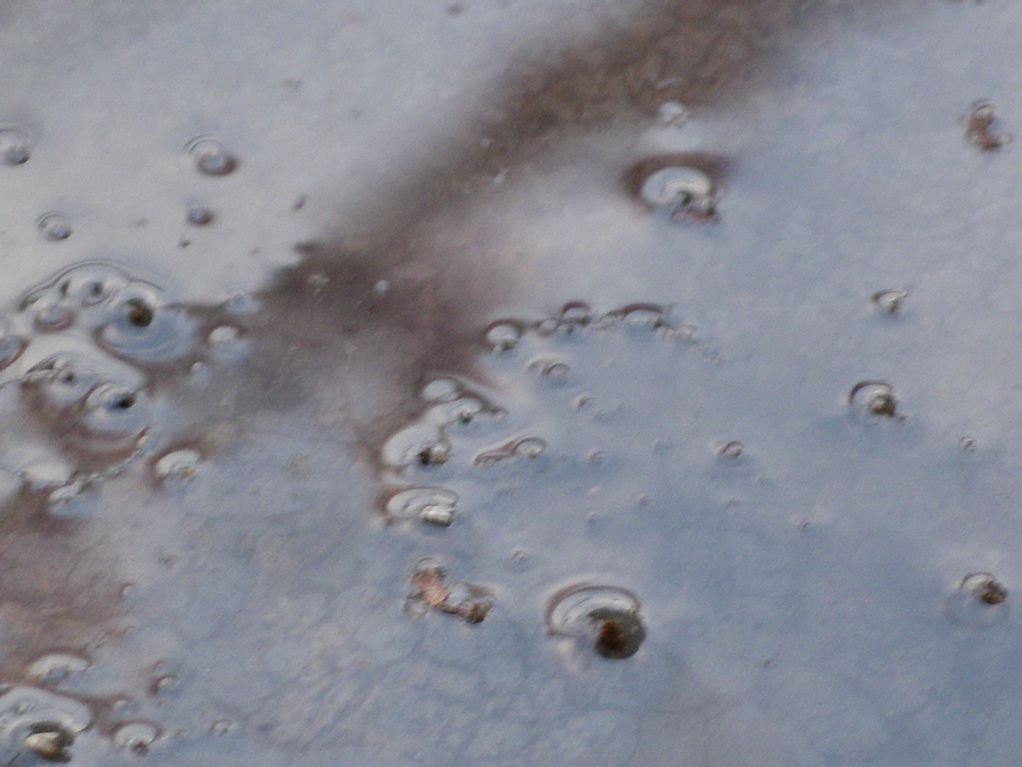Introduction to phonetics, the articulation of voice and the possibilities of voice in general in sound art and in other creative fields (music, poetry). We will see how the voice is produced, how it can be transcribed and analyzed and all the possibilities of the body as a sound producer. We will see some creative uses of voice: extended vocal techniques and phonetic improvisation, as well as some samples of sound poetry and polipoesia, which will be analyzed in more depth in the following semester. The aim is to delve into the creative possibilities of the instrument that most of us have most at our disposal, the voice and those of the body in general, which is able to produce a great multiplicity of sounds beyond the voice. Some of the authors we will deal with will be Demetrio Stratos, Joan La Barbara, Jaap Blonk, Meredith Monk, Henri Chopin, Phil Minton, Laurie Anderson, Eke Hodell, Robert Ashley and Juan Pablo Villa, among others.
Postgrau: Postgraduate in Sound Creation: Materials and tools
30 ECTS*
Phonetics
Musical generation elements
This module explores automated music composition strategies, with practical examples and special emphasis on the historical implications and impacts of these techniques on recent music, from the introduction of sequencers to the use of randomness, algorithmic processes or the art of systems, both in academia and popular music. From stubborn repeatability to found mathematical objects.
Audio formats, editors and mixers
Summary
Sound editing is the process by which the elements of a sound creation are transformed and manipulated. Adjusting levels, combining files, introducing effects or balancing heterogeneous materials are basic treatments for the practice of sound art. This module studies the different tools to carry out these treatments and lays the foundation for the correct processing of audio materials.
Topics
- Audio formats, concepts and definitions
- Basic editing, bug fixes, hands-on session
- Creative editing, video sound.
- Different uses and possibilities of Ableton Live
Radio Creation
This module is a research space on the aesthetic, technical and ethical characteristics inherent to radio environment, an opportunity to explore how acoustic compositions can be made with these elements, to produce radio creations.
Classes will include hands-on discussions and theoretical sessions, face-to-face auditions, and critical analysis, as well as a looking at the art of composing and orchestrating the programming of a radio station.
Practical sessions will focus on the production of small sound realizations of acoustic moments, (with recording sounds from outside class hours) to illustrate and exemplify the material of the theoretical sessions. Each student will prepare a short radio project, which will be the basis of the individual evaluation. The project must be motivated and related to the programming context in which it will be delivered.
Deep Listening and Soundscape Recording
Deep listening and recording of soundscape/
listening technologies and acoustic ecology.
Until recently, the sound factor was not understood as a measuring element within the processes of change in an ecosystem, and fonography was basically limited to the recording of isolated individuals, understanding the sound object as a unique expression within the processes of communication between individuals. Even in the field of ethology, sound records are limited to trying to determine the uniqueness of certain sounds culturally predisposing to a utility within the communication between individuals of the same species and in this way define their function.
If we consider that soundscapes are the sum of these singularities, and that despite what was thought until recently, species have a predetermination to function within the landscape to the point of evolving towards inter-species communication, the isolated sound record of individuals seems almost totally useless; therefore, here is a utility of recording the soundscape “in all its integrity”.
A listening and adaptation methodology
It is about understanding how to generate the methodological constants that allow us, through listening and sound recording, to understand some of the most intimate questions of the behavior of an ecosystem and above all its meanings: There are the technical issues that can perhaps help us understand technology as an extension of our perceptual experience and not just as a measurement tool. A this point we must consider that our technology and our science, are based on measurement and perhaps comparison, considering comparative fact as well as a measurement action. Therefore, I like to think these exercises on perception are nothing more than an attempt to use listening as a measuring tool, and perhaps what makes all this a sublime experience, is precisely to maintain certain methodologies that allow me to compare and find, between very similar landscapes, great differences. I believe that in the search for these differences is the fact that, a seemingly passive attitude becomes a source of knowledge that can broaden the perceptual thresholds and the thresholds of knowledge itself.
One of the paradoxes most present in the sonology is the fact of trying to know how nature sounds, and in trying to do so, to see that our presence alters in such a meaningful way the landscape that what we are really hearing is a reaction of the medium to our presence and our technology. Therefore, what we really hear is a kind of acoustic shadow caused by our presence… It is like we are really listening to ourselves… Based on this awareness, I could also say that this project is about this: how to listen to ourselves…
So how can we significantly reduce the impact of our presence and that of our recording machines in a specific context?
These are the topics we discussed in this module.
Ethics and aesthetics of sound art
Syllabus
- Sound art: definition problems. Assessments of the joint between art and sound
- In the origins of sound art.
- The relationship between music and visual arts. Drift from romantic sensitivity.
- The fascination of the machine: futurism.
- To another notion of art: Dadaism.
- Development of sound art.
- Sound as an object. Pierre Schaeffer’s definition.
- Sound as a center: John Cage’s example.
- The sound installation: a new relationship between listening and looking?
Evaluation criteria
1. Work: The theme of the written work should correspond to the given topics. The written work has to be presented in accordance with international academic standards. Percentage: 60%
2. Comments and/or reviews of texts and/or audiovisual material. Percentage: 40%
Bibliography
BLOCK, R., “Música fluxus: el acontecimiento cotidiano”. Olobo, nº 1, Cuenca, 2000.
CAGE, J., Escritos al oído. Traducción y edición de Carmen Pardo. Murcia: Colegio de Aparejadores y Arquitectos técnicos, Colección de Arquilectura, 1999.
CHION, M., El arte de los sonidos fijados. Cuenca: Centro de Creación Experimental, 2001.
DOUGLAS, K., Noise Water Meat. A history of sound in the arts. The MIT Press, 1999.
FONTANA, B., Sound Sculpture. Melbourne: National Gallery of Victoria, 1970.
GÓMEZ DE LA SERNA, R., Ismos. Madrid: Biblioteca Nueva, 1931 (Buenos Aires: Poseidón, 1943; Madrid: Museo Nacional Centro de Arte Reina Sofía, 2002).
GONZÁLEZ GARCÍA, A., F. CALVO SERALLER i S. MARCHAN FIZ, Escritos de arte de vanguardia 1900-1945. Madrid: Turner-Fundación Orbegozo, 1979.
PARDO, C., “De la música concreta, el arte acusmático y la pluridisciplinariedad del arte contemporáneo”.Doce Notas, nº 1, Madrid, 1997.
—, “La sensibilidad de la máquina: el circuito sonoro”. Acto, nº 1, Santa Cruz de Tenerife, 2002.
(http://webpages.ull.es/users/reacto/pg/n1/3.htm)
RUSSOLO, L., El arte de los ruidos. Cuenca: Centro de Creación Experimental, 1998.
SATIE, E., Memorias de un amnésico y otros escritos. Madrid: Fugaz, 1989 (Madrid: Ardora, 1994).
SCHAFER, R. M., The soundscape: our sonic environment and the tuning of the world. Rochester: Destiny Books, 1993.
SCHAEFFER, P. Tratado de los objetos sonoros. Madrid: Alianza Música, 1988.
Sculpture and sound object
Objectives
- To acquire a practical and experimental attitude with the concepts, procedures and techniques of sculpture applied to Sound Art, based on the interest of each student and their personal project.
- To develop the experimental attitude based on the knowledge of the theory and practice of plastic artists who have their field of action in sculpture and sound installation.
- To provide conceptual and methodological bases to understand artistic interventions in sound sculpture and apply them in a personal artistic research process.
- To Know the mechanisms of artistic language that works from resonance systems, sound art, interfaces, interference through poetic actions, visual and acoustic prostheses, body sensors, motion mappings, inconsistent action records, and everything that refers to an art of exchange between disciplines and languages of sources with diverse origin.
- To familiarize in the theoretical and conceptual bases of the latest trends of contemporary sculpture that uses intangible resources, and specifically sound as material of artistic expression.
Syllabus
- Sculpture and sound object.
- Construction of instruments and forms of resonance.
- Automations: the shape in motion.
- Percussion with objects and materials.
- Recycled sounds.
- Sound machines.
- Sound shapes and cymatics.
Psychoacoustics and experimental music
Summary
Study of Synthesis, Processing, and Sound Treatment for Aesthetic and Musical Purposes from a Psychophysiological Perspective
This module is based on the study of sound perception and its integration into the Central Nervous System, with the aim of providing essential knowledge for the mandatory application of technical and aesthetic tools in musical creation using both electronic and mechanical means. From this perspective, and with the intention of offering the broadest possible overview, the theoretical sessions focus on the study of various sound processing and generation algorithms and tools, as well as their specific uses in experimental music. Therefore, an important part of the teaching methodology is based on listening to and analyzing representative works from each aesthetic orientation. The other equally important part is the creation of short compositions related to the theoretical topics covered in each session, addressing one psychoacoustics topic and one or two experimental music topics, depending on complexity.
This module considers Max as a fundamental tool, using the FLUCOMA library, which is based on Artificial Intelligence. Additionally, many examples will be based on Reaper, Audacity, Sonic Visualizer, and other synthesis and processing tools, including various plugins, MIDI sequencing, and multitrack mixing.
ABBREVIATED SYLLABUS
- Introduction to the psychophysiology of sound perception
- Transduction
- General hearing scenario. Sound source, medium, receiver
- Structure of the (receiver) auditory system
- Diagram of transductions in the auditory system
- Perception of sounds. Frequence. Amplitude. Perceptual scales of height and dynamics. Sound spectrum
- Critical bands
- Phased spaces of sound and musical perception. Articulation. Color Micro-melody
- Sound synthesis
- Basic methods of synthesis: Additive, Subtractive, Frequency modulation, Linear and nonlinear distortion
- Elaborated synthesis methods: Granular, Stochastic
- Convolution and cross synthesis. Phase Vocoder
- Composition · Textures · Graphic Scores · Time structure
- Sound editing and treatment
- Simple effects on the temporary domain – Edition
- Simple effects on amplitude.3.3. DC Off-set
- Inversion
- Amplitude modulation – Trémolo
- Simple effects on frequency
- Dynamic Range Processors
- Filtering (and filter-based effects)
- Effects based on delay
- Effects on signal amplitude: compression
- Complex effects. Multiband compression.
PSYCHOACOUSTICS · DETAILED SYLLABUS
Topic 1 // Introduction to Musical Psychoacoustics. Basic Concepts
• The relationship between stimulus and sensation: Frequency / Pitch.
• Amplitude, Sound Intensity, and Loudness Perception.
• Exercises and Tools: Max, Reaper, Audacity, Sonic Visualizer
Topic 2 // Functional Description of the Auditory System
• Functional Description of the Peripheral Auditory System I.
• Functional Description of the Peripheral Auditory System II.
Topic 3 // Functional Description of the Central Auditory System
Topic 4 // Pitch Perception
Topic 5 // First- and Second-Order Psychoacoustic Effects
• First-Order Psychoacoustic Effects.
• Second-Order Psychoacoustic Effects.
Topic 6 // Loudness Perception
Topic 7 // Timbre: A Multidimensional Approach
• Amplitude, frequency, time, micro-melody, spectrum, dynamics, and articulation.
• Tools: Sonic Visualizer, ZSA Descriptors, Basic Waveforms.
EXPERIMENTAL MUSIC · DETAILED SYLLABUS
Topic 8 // Introduction to Experimental Music
• Music and Experimentalism.
Topic 9 // Experimental Music Notation · Grids, Special Notations, and Graphic Scores
• Types of Grids.
• Special Notations.
• Graphic Scores.
• Exercise: Create a Graphic Score.
Topic 10 // Concrete Music and Electroacoustic Music. Audio Editing and Mixing
• Sound Object.
• Audio Editing, Montage, and Mixing.
• Concrete Music, Electroacoustic Music, and Acousmatic Arts.
• Listening and Analysis of Works.
• Exercise: Create a Concrete Music Piece.
Topic 11 // Electronic Music. Classical Algorithms
• Electronic Music.
• Analysis of Studie II · Karlheinz Stockhausen.
• Basic Sound Synthesis Algorithms.
• Exercise: Create Sound Mixtures, then develop a Fully Electronic Piece.
Topic 12 // Synthesis · Electronic and Electroacoustic Music · Time-Domain Algorithms
• Digitalization and Wavetable Synthesis.
• Time-Domain Sound Synthesis: Waveshaping.
• Time-Domain Sound Synthesis: Frequency Modulation.
• Time-Domain Sound Synthesis: Subtractive Synthesis.
• Time-Domain Sound Synthesis: Synchronous and Asynchronous Granular Synthesis.
• Listening and Analysis of Works.
• Exercise: Create a Short Piece Using Time-Domain Algorithms.
Topic 13 // Synthesis · Electronic and Electroacoustic Music · Frequency-Domain Algorithms
• Frequency-Domain Synthesis.
• Additive Synthesis and Convolution.
• Listening and Analysis of Works.
• Exercise: Create a Short Piece Using Additive Synthesis.
Topic 14 // Processing · Electronic and Electroacoustic Music · Time-Domain Algorithms
• Time-Domain Processing Algorithms: Filters.
• Listening and Analysis of Works.
• Exercise: Create a Short Piece Using Filtering of Non-Synthetic Sounds.
Topic 15 // Processing · Electronic and Electroacoustic Music · Frequency-Domain Algorithms
• Frequency-Domain Processing Algorithms: Convolution.
• Listening and Analysis of Works.
• Exercise: Create a Short Piece Using Convolution of Non-Synthetic Sounds.
Topic 16 // Processing · Electronic and Electroacoustic Music · Dynamic Algorithms
• Dynamic Sound Processing.
• Listening and Analysis of Works.
• Exercise: Create a Piece Based on Dynamic Processing of Non-Synthetic Sounds.
Evaluation criteria
1. Electronic musical composition with computer and speakers only, without instrumental manipulation, 7 minutes and made only with the concepts developed in the classroom during the course, adhered to the previous program specified. Percent: 60%
2. Participation in class and comments on the topics and exercises raised in the classroom. Percent: 40%
Bibliography
1. Introduction to the psychophysiology of sound perception
BENADE, A., Fundamentals of Musical Acoustics. Nova York: Oxford University Press, 1976.
COOK, P. R. (ed.), Music, Cognition, and Computerized Sound: An Introduction to Psychoacoustics. The MIT Press, 1999.
HOWARD, D. i J. ANGUS, Acoustics and psychoacoustics. Londres: Focal Press, 2000.
MATLIN, M. W. i H. J. FOLEY, Sensación y percepción. Madrid: Prentice Hall Iberia, 1996.
MOORE, B., An Introduction to the Psychology of Hearing. Londres: Academic Press Ltd., 2003.
MUNAR, E., J. ROSSELLó i A. SáNCHEZ-CABACO, Manual de Atención y Percepción. Madrid: Alianza, 1999.
PIERCE, J. R., Los sonidos de la música. Barcelona: Labor, Biblioteca Scientific American, 1985.
PLACK, C. J., The sense of hearing. Nova Jersey: Mahwah, Erlbaum, 2005.
ROSSING, T. D., The Science of Sound. Addison Wesley, 1990.
ZWICKER, E., H. FASTL i H. FRATER, Psychoacoustics: Facts and Models. Berlín: Springer, 1999.
2.Editing and sound treatment
ALKIN, G., Sound Techniques for Video and TV. Londres: Focal Press, 1989.
BURGER, J., The Desktop Multimedia Bible. Nova York: Addison-Wesley, 1993.
CARRAZÓN, J. C., Audio3D. Madrid: Anaya Multimedia, 1996.
JORDÀ, S., Audio digital y MIDI. Madrid: Anaya Multimedia, 1997.
NISBETT, A., The sound studio. Londres: Focal Press, 1995.
RUMSEY, F., Digital Audio Operations. Oxford: Focal Press, 1991.
—, The Audio Workstation Handbook. Oxford: Focal Press, 1996.
— i T. McCormick, Sound and Recording: an Introduction. 1994. (Existeix traducció a l’Espanyol de la primera edició pel IORTV).
SCHAEFFER, P., Tratado de los objetos musicales. Madrid: Alianza, 1988.
ZAZA, T., Audio Design. Nova Jersey: Prentice Hall, 1991.
3. Sound Synthesis
BALLORA, M., Essentials of Music Technology. Nova Jersey: Prentice Hall, 2003.
BLESSER, B., “An Interdisciplinary Synthesis of Reverberation Viewpoints”. Journal of the Audio Engineering Society, Vol. 49 (10), 2001, pp. 867-903.
BOULANGER, R., The Csound Book. The MIT Press, 2000.
CHOWNING, J., “The Synthesis of Complex Audio Spectra by Means of Frequency Modulation”. Journal of the Audio Engineering Society, Vol. 21, 1973, pp. 526-534.
—, “Frequency Modulation Synthesis of the Singing Voice”. M. V. Mathews i J. R. Pierce (eds.), Current Directions in Computer Music Research. The MIT Press, 1989, pp. 57-64.
COOK, P. R. (ed.), Music, Cognition and Computerized Sound. The MIT Press, 1999.
DODGE, Ch. i T. A. JERSE, Computer Music: Synthesis, Composition, and Performance. Nova York: Schirmer, 1985.
DOLSON, M., i J. LAROCHE, “About this Phasiness Business”. Proceedings of the International Computer Music Conference. Ann Arbor: International Computer Music Association, 1997, pp. 55-58.
GREY, J. M., i J. A. MOORER, “Perceptual Evaluations of Synthesized Musical Instrument Tones”. Journal of the Acoustical Society of America, Vol. 62, 1977, pp. 454-462.
HARTMANN, W. M., “Digital Waveform Generation by Fractional Addressing”. Journal of the Acoustical Society of America, V. 82, 1891, 1987, pp. 883.
JORDÀ, S., Audio digital y MIDI. Madrid: Anaya Multimedia, 1997.
MOORE, F. R., Elements of Computer Music. Nova Jersey: Prentice Hall, 1990.
—, An Introduction to the Mathematics of Digital Signal Processing. McGraw Hill, 1986.
POHLMANN, K. C., Principios de Audio Digital. Madrid: McGraw-Hill, 2002.
PUCKETTE, M., Theory and Techniques of Electronic Music. World Scientific Press, 2007.
SMITH III, J. O., Introduction to Digital Filter Theory. STAN M-20, 1985.
—, Mathematics of the Discrete Fourier Transform (DFT), with Music and Audio Applications. Menlo Park (California): W3K Publishing, 2003.
ROADS, C. (ed.), The Computer Music Tutorial. The MIT Press, 1996.
—, Microsound. The MIT Press, 2004.
RUSS, M., Síntesis y Muestreo de Sonido. Madrid: Instituto Oficial de Radio y Televisión, 1999.


